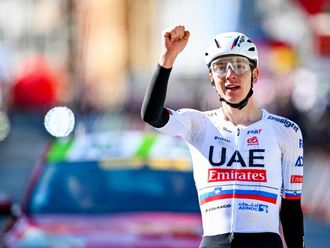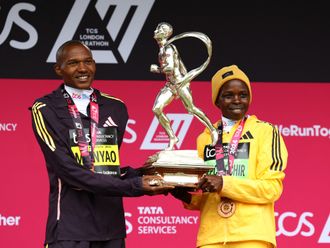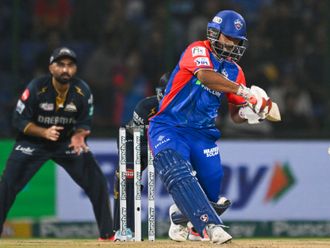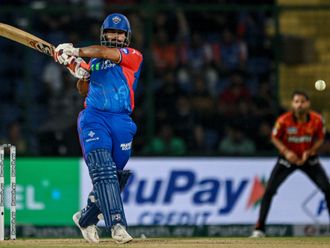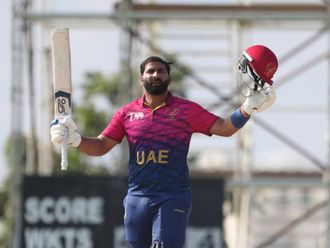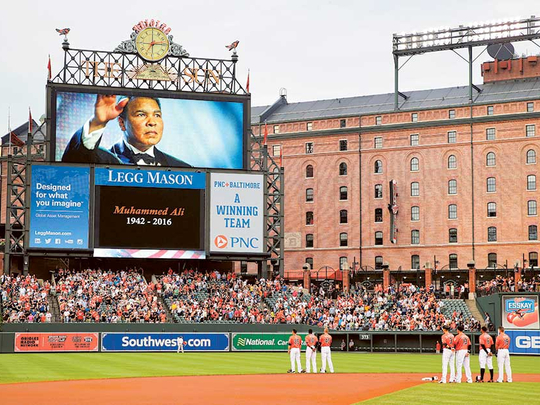
London: Muhammad Ali was a very special boxer who emerged as the leading fighter from the golden age of heavyweights.
There will always be arguments about who was the greatest heavyweight ever and many will cite Joe Louis, Larry Holmes or Jack Johnson, given the longevity of their respective reigns as undisputed champion. Yet Ali was different. So different.
The Louisville fighter proclaimed himself as ‘The Greatest’ and, time and again, he delivered, and in boxing terms there is so much to be said for that. Ali had PR panache, selling himself brilliantly, and then delivering in the ring. Three times Ali became heavyweight champion of the world, first against Sonny Liston, secondly against George Foreman and then, lastly, he regained his crown from Leon Spinks.
Despite the political controversy that surrounded his career, when there were those who loved his views and those who even hated him at times, there can be no denying that Ali was a truly great fighter once the bell rang. With his three periods as world champion (1964-1967, 1974-1978, 1978-1979), he dominated the better part of two decades of the heavyweight division.
He made a total of 19 successful title defences, lost five bouts in 61 fights and stopped 37 opponents. Across that 21-year span, his style changed dramatically. His armoury was vast, and changed as his career developed. He was one of the very first fighters to use trash-talk for psychological effect, but his speed of thought and articulacy was matched by the fastest hands ever seen in his division, and was allied with the footwork of an elite dancer.
In the May 5, 1969 edition of Sports Illustrated, Ali’s jab was measured with an omegascope. It covered 16.5 inches in four-hundredths of a second, which is the same time as the blink of an eye.
The author John Durant once described Ali as having “lightning fast hands and a pair of legs that moved around the ring like a ballet dancer. He would float just out of range with his hands dangling at his side as if to taunt his opponent”.
The late Bert Randolph Sugar, who covered the fighter’s entire career, once told me: “Ali moved, and the traditionalists didn’t know what to do with his style. He held his hands too low, he moved probably too much. But he did everything, and he did it all brilliantly. But he was that one unique person, and we need those in every sport as a breakthrough star.”
Speed was Ali’s real ally. It masked his mistakes, his unorthodoxy. Ali would drop his hands low, his right hand often failing to be in place by his right jaw to block counter jabs. It was Joe Frazier’s legendary trainer Eddie Futch who said at the time that Ali would show opponents his mistakes, and then “beat you with them”.
Reflexes, fast footwork, and an incredible command of range and use of the entire ring allowed Ali to get away with so much in the ring defensively in his early career. His ring generalship was exceptional, another of his great skills.
Recall, moreover, that Ali lost three and a half of his prime boxing years when his licence was removed after he had refused to be inducted in the Vietnam War draft in 1967. Returning in 1971, he was a different fighter. Gone was the dancer, and at this stage in his career he was forced to rely on a granite chin, unshakeable determination and the heart of a champion.
This was demonstrated in his 1971 ‘Fight of the Century’ with Frazier at Madison Square Garden, when he was floored by Frazier’s left hook but fought on. Ali showed that resilience again in a loss to Ken Norton, who broke Ali’s jaw.
Indeed, apart from those two defeats, Ali’s three other defeats were at the end of his career to Spinks, Larry Holmes and Trevor Berbick. Ali was a shadow of himself in those last two contests. He was a shot fighter, his powers had gone.
Two bouts defined Ali. The first was against the undefeated George Foreman, who was then 40-0 with 37 knockouts, when Ali used his powers of erudition and his brilliant rope-a-dope strategy to win as a 3-1 underdog. The second was the third in the trilogy of fights with Frazier in the heat of Manila, during which the two men battled almost to death.
Ali’s heart and will never broke for 14 rounds, but he broke Frazier. “I hit him with punches that would have brought down the walls of a city. He’s a great and mighty champion,” Frazier said later.
As a 74-year-old, Muhammad Ali entered into his eternal moment yesterday. His boxing skills and poetry in the ring will never ever be forgotten.





